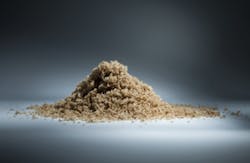Contaminant of the Month: Silica and silicates
What they are
- Silicon is the second most abundant element on Earth, after oxygen.
- Silicon dioxide (SiO2) sand and fused quartz are silicas.
- Silicate minerals constitute about 90 percent of the Earth’s crust.
- Silicates are anions containing silicon and oxygen (for example, orthosilicate, SiO4-4), and several are usually slightly soluble in water, so silicate salts are commonly present in water.
- These consist of many metal silicates such as Zn2SiO4, as well as hundreds of complex multimetallic mineral silicates, for example, Fe3Al2 (SiO4)3.
- Silicate minerals exist in multiple forms, including several gemstones, asbestos, talc and mica. Zeolites are complex aluminosilicates with several metals and silicon in many oxygen complexes.
- Silicates are components of glass, detergent formulations and pottery. They are also used for fireproofing paper and wood.
- Water fluoridation is often accomplished with fluosilicic acid, which rapidly hydrolyses to silicate and fluoride in water.
Effects of silicates in water
- Silicates in water can be beneficial or cause water quality and treatment problems.
- Natural concentrations can range from a few parts per million (ppm) in surface water to more than 100 ppm in groundwater.
- Some silicates are in solution, and some are present as colloids that are difficult to manage.
- Silicates can form scale as well as accumulate to foul membrane surfaces.
- Silicates can also suspend metals by sequestration; that is the basis for the controlled applications of silicates to control corrosivity and to reduce concentrations of metals like lead and copper in corrosive water environments.
- When used as a corrosion control source, continuous dosages of about 30 milligrams per liter are common initially for stabilization, but the dose is reduced over time as the “silicate demand” is achieved.
Health and environmental aspects
- Silicon compounds are present in all living organisms.
- They exist as hydrated, amorphous silicates and are required for structural elements in single-celled organisms, higher plants and animals.
- Silicon in assimilable forms might be considered an essential element.
- Body levels of silicates tend to decline after birth while calcium increases.
- There are claims of positive roles of silicate in bone strength, hair and skin quality, and many other claims of which the validity is yet to be determined. Even silicon supplements are available.
- In ecosystems, the silicon and phosphorus ratio and the silicon and nitrogen ratio are thought to contribute to the type of algae that will dominate, for example, diatoms versus cyanobacteria. Algal populations shift after springtime as the silicate is consumed.
Water treatment
- Silicate removal technologies are a function of the physical form that is present.
- Settling and filtration will remove granular silicates.
- Chemical precipitation can be used for some dissolved and colloidal silicates.
- Reverse osmosis (RO) will remove dissolved silicates, but removal of silicates prior to RO is desirable to reduce the risk of fouling.
Analysis
- There is a molybdosilicate colorimetric method and others in Standard Methods 4500-SiO2.
- ASTM D859 is a version of the molybdosilicate method for water and wastewater.
- Test kits are available to help detect dissolved silica levels in water.
Regulation
- There are no primary or secondary regulations for general silicates in drinking water, although there is a maximum contaminant level of seven million fibers longer than 10 microns for asbestos.
Dr. Cotruvo is president of Joseph Cotruvo and Associates, LLC, Water, Environment and Public Health Consultants. He is a former director of the U.S. EPA Drinking Water Standards Division.
